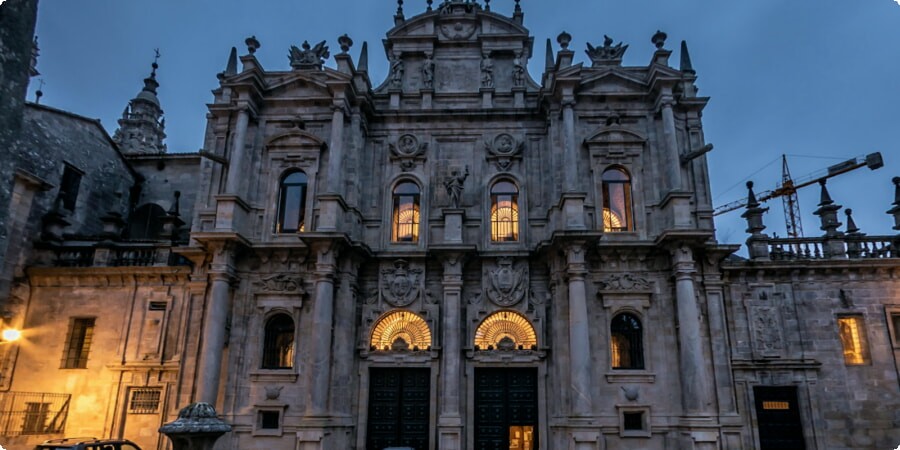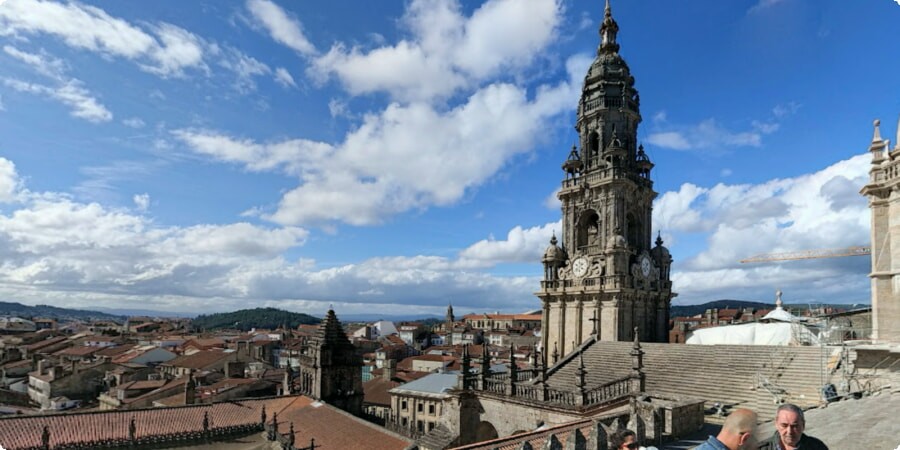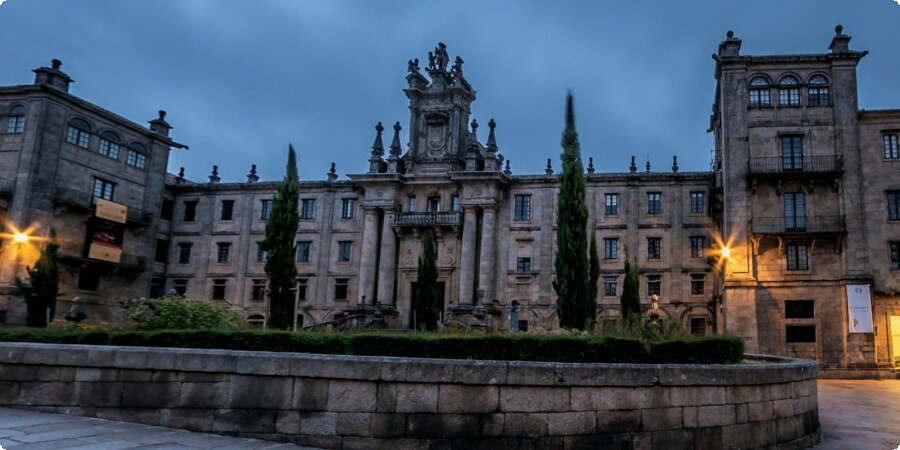The History of Catedral de Santiago de Compostela: A Journey Through Time
The Catedral de Santiago de Compostela, located in Galicia, Spain, is not just a magnificent architectural marvel but also a beacon of faith and history. This iconic cathedral marks the culmination of the Camino de Santiago pilgrimage, attracting millions of visitors and pilgrims from around the globe each year. Steeped in rich history, the cathedral stands as a testament to centuries of devotion, artistry, and cultural significance. Its impressive facade and intricate interiors tell stories of a bygone era, offering a journey through time to those who venture through its doors.
The Legend of Saint James
The origins of the Catedral de Santiago de Compostela are deeply intertwined with the legend of Saint James the Greater, one of Jesus Christ's apostles. According to tradition, Saint James preached in Spain before returning to Judea, where he was martyred in 44 AD. His remains were believed to have been transported back to Spain by his disciples, eventually being interred in what is now Santiago de Compostela.
In the early 9th century, a hermit named Pelayo discovered the tomb of Saint James, guided by a celestial light. This miraculous discovery led to the construction of a small chapel on the site, which quickly became a revered pilgrimage destination. The significance of Saint James in Christianity and Spanish culture cannot be overstated. He is not only the patron saint of Spain but also a symbol of Christian resistance during the Reconquista, the centuries-long effort to reclaim Spanish territories from Muslim rule .
Early Construction and Romanesque Influence
The initial construction of the cathedral began in the early 9th century, following the discovery of Saint James's tomb. The first church was a modest structure, but as the pilgrimage grew in popularity, a larger and more magnificent building was envisioned. By the late 9th century, King Alfonso III commissioned a grand basilica, designed in the Romanesque style, which was typical of the period.

Romanesque architecture is characterized by its semi-circular arches, robust structure, and extensive use of stone. The early phases of the Catedral de Santiago de Compostela incorporated these elements, establishing a foundation that would influence its subsequent expansions. Notable features from this period include the Portico da Gloria, a masterful Romanesque portal sculpted by Maestro Mateo, which remains one of the cathedral's most treasured artworks .
The Romanesque Masterpiece: The 12th Century Rebuild
As the pilgrimage continued to grow in importance, the need for a more substantial structure became apparent. In the 12th century, the cathedral underwent a significant transformation, becoming one of the most magnificent examples of Romanesque architecture in Europe. Bishop Diego Gelmírez played a crucial role in this redevelopment, overseeing the construction and ensuring that the cathedral reflected the grandeur befitting its spiritual and cultural significance.
The 12th-century rebuild introduced several architectural innovations and artistic embellishments. The cathedral's layout was designed to accommodate the vast number of pilgrims, featuring wide aisles and a grand transept. The nave and aisles were adorned with intricate stone carvings and beautiful capitals, depicting biblical scenes and figures.
One of the most remarkable features of this period is the Portico da Gloria, an elaborate triple-arched portal that serves as the main entrance to the cathedral. Created by Maestro Mateo, this masterpiece of Romanesque sculpture depicts Christ in Majesty surrounded by apostles, prophets, and angels, exuding a sense of divine majesty and artistic excellence .
Recommendation
For those planning to explore Santiago de Compostela and beyond, renting a car can provide the flexibility to visit nearby attractions and enjoy the scenic beauty of Galicia. You can conveniently book a car at Barcelona Airport here.

These initial sections set the stage for understanding the historical and architectural evolution of the Catedral de Santiago de Compostela. As we delve deeper into its Gothic and Baroque additions, the significance of the pilgrimage route, and ongoing preservation efforts, the rich tapestry of its history will continue to unfold.
The Romanesque Masterpiece: The 12th Century Rebuild
As the pilgrimage continued to grow in importance, the need for a more substantial structure became apparent. In the 12th century, the cathedral underwent a significant transformation, becoming one of the most magnificent examples of Romanesque architecture in Europe. Bishop Diego Gelmírez played a crucial role in this redevelopment, overseeing the construction and ensuring that the cathedral reflected the grandeur befitting its spiritual and cultural significance.
The 12th-century rebuild introduced several architectural innovations and artistic embellishments. The cathedral's layout was designed to accommodate the vast number of pilgrims, featuring wide aisles and a grand transept. The nave and aisles were adorned with intricate stone carvings and beautiful capitals, depicting biblical scenes and figures.
One of the most remarkable features of this period is the Portico da Gloria, an elaborate triple-arched portal that serves as the main entrance to the cathedral. Created by Maestro Mateo, this masterpiece of Romanesque sculpture depicts Christ in Majesty surrounded by apostles, prophets, and angels, exuding a sense of divine majesty and artistic excellence.
Gothic and Baroque Additions
The Catedral de Santiago de Compostela continued to evolve over the centuries, incorporating Gothic and Baroque elements that enhanced its architectural splendor. During the 14th and 15th centuries, Gothic influences began to appear, particularly in the addition of chapels and the expansion of the cloister.

Gothic Enhancements
The Gothic period brought an emphasis on verticality and light. The construction of the Royal Hospital of Santiago, now a Parador, to accommodate the growing number of pilgrims, is a testament to the architectural advancements of the time. The Gothic cloister, with its pointed arches and ribbed vaults, added a sense of grandeur and elegance to the cathedral complex.
Baroque Flourishes
In the 17th and 18th centuries, Baroque additions transformed the appearance of the cathedral, most notably the western facade. The Obradoiro facade, designed by Fernando de Casas Novoa, is a stunning example of Baroque architecture, with its dynamic forms, intricate details, and dramatic use of light and shadow. The facade serves as a grand entrance, welcoming pilgrims and visitors with a sense of awe and reverence.
The Pilgrimage Route: Camino de Santiago
The development of the Camino de Santiago, or the Way of Saint James, as a major pilgrimage route, has been integral to the cathedral's history and significance. The pilgrimage routes, which span across Europe and converge at Santiago de Compostela, have been traveled by millions of pilgrims seeking spiritual growth, penance, and adventure.
Historical Significance
The Camino de Santiago gained prominence in the Middle Ages, becoming one of the most important Christian pilgrimages alongside Jerusalem and Rome. Pilgrims from all walks of life embarked on this journey, facing physical and spiritual challenges as they made their way to the cathedral. The pilgrimage fostered a sense of unity and shared purpose among the faithful, contributing to the cultural and religious fabric of medieval Europe.
Modern-Day Pilgrimage
Today, the Camino de Santiago remains a popular pilgrimage, attracting people from around the world. The routes are well-marked, with infrastructure to support pilgrims, including albergues (hostels), rest areas, and waymarkers. Pilgrims can choose from various routes, such as the Camino Francés or the Camino Portugués, each offering unique landscapes and cultural experiences.
For those wishing to explore beyond Santiago de Compostela, renting a car can provide the flexibility to visit nearby attractions and experience the beauty of Spain at your own pace. You can conveniently book a car here.
These sections delve into the architectural evolution and the enduring significance of the pilgrimage route, enriching our understanding of the Catedral de Santiago de Compostela's historical journey. The next sections will explore the restoration efforts, cultural importance, and the modern-day role of this iconic cathedral.

Restoration and Preservation Efforts
The Catedral de Santiago de Compostela, with its centuries-old history, has faced the inevitable ravages of time. To ensure that this monumental structure continues to inspire future generations, extensive restoration and preservation efforts have been undertaken.
Early Restoration Efforts
The first significant restoration efforts began in the 19th century, aiming to repair the wear and damage caused by centuries of weathering and use. This period saw the stabilization of structural elements, the cleaning of facades, and the restoration of intricate stone carvings.
Modern Restoration Projects
In recent years, advanced techniques and materials have been employed to preserve the cathedral. Efforts have included:
- Cleaning and Conservation: Removing biological growth, pollution, and accumulated grime from the stone surfaces to reveal the original beauty of the architecture.
- Structural Reinforcement: Strengthening the foundations and key structural elements to ensure stability.
- Artistic Restoration: Restoring frescoes, sculptures, and other artworks to their former glory.
These efforts are ongoing, reflecting a commitment to preserving the cathedral’s historical and cultural significance. The meticulous work ensures that visitors can continue to marvel at its beauty while safeguarding its structural integrity.
Cultural and Religious Significance Today
The Catedral de Santiago de Compostela is not merely a historical relic; it remains a vibrant center of cultural and religious life.
Religious Importance
As the endpoint of the Camino de Santiago, the cathedral continues to be a major pilgrimage site. Each year, thousands of pilgrims arrive to attend the Pilgrim's Mass, a moving ceremony that includes the swinging of the Botafumeiro, a giant incense burner that fills the cathedral with fragrant smoke. This tradition, dating back centuries, symbolizes the purification of the pilgrims and adds to the spiritual atmosphere of the cathedral.
Cultural Events and Festivals
The cathedral is also a focal point for cultural events and festivals. The Feast of Saint James, celebrated on July 25th, is a major event that draws visitors from around the world. The festivities include religious ceremonies, parades, and cultural performances, highlighting the deep-rooted traditions and vibrant community spirit of Santiago de Compostela.
The cathedral's designation as a UNESCO World Heritage site underscores its global cultural significance, attracting scholars, tourists, and art enthusiasts eager to explore its rich history and stunning architecture.
Nearby Attractions: What to See Around the Catedral de Santiago de Compostela
The area surrounding the Catedral de Santiago de Compostela is rich with attractions that offer visitors a deeper understanding of the region’s history, culture, and natural beauty.
Historic Sites and Museums
- Monastery of San Martín Pinario: Located just a short walk from the cathedral, this historic monastery offers stunning architecture and a glimpse into monastic life.
- Museo do Pobo Galego: This museum provides insights into the cultural heritage of Galicia, showcasing traditional costumes, crafts, and historical artifacts. Wikipedia | Google Maps
Parks and Scenic Spots
- Alameda Park: A beautiful park with lush gardens, scenic walking paths, and panoramic views of the cathedral. It’s an ideal spot for a leisurely stroll or a relaxing picnic.
- Monte do Gozo: A hilltop park that offers a stunning view of Santiago de Compostela. It is traditionally the first spot from where pilgrims get their first glimpse of the cathedral. Wikipedia
Local Dining and Shopping
The streets around the cathedral are lined with charming cafes, restaurants, and shops. Visitors can savor traditional Galician cuisine, such as pulpo a la gallega (Galician-style octopus), and shop for unique souvenirs, including handcrafted jewelry and local delicacies.
For those exploring the region, renting a car can be a convenient option to visit nearby towns and scenic spots. You can book a car in Spain here.
The Catedral de Santiago de Compostela is not just a historic monument but a living symbol of faith, culture, and community. Its journey through time, from its legendary origins to its ongoing significance, continues to inspire and captivate all who visit.